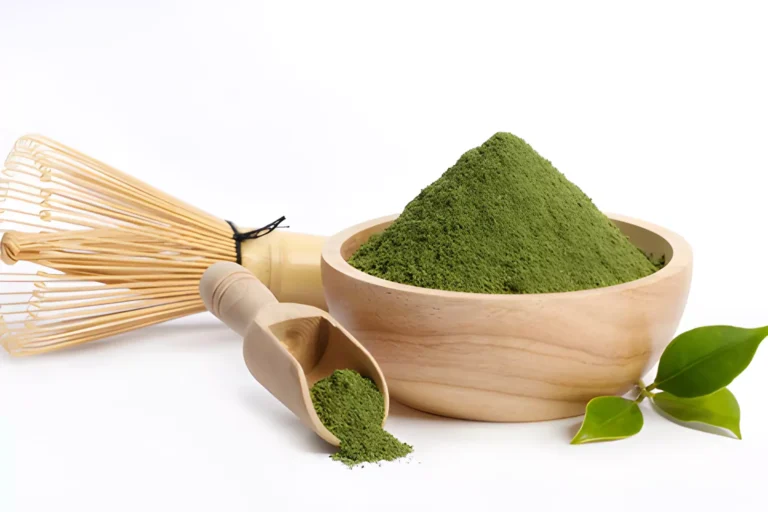10 Must-Try Turmeric Substitutes That Are Just As Good
Don’t you have turmeric in your pantry? Are you allergic to it, or simply don’t like its taste? Don’t worry. Many other ingredients can replace turmeric in your recipes. Some can mimic its color, some can mimic its flavor, and some can even mimic its benefits.
This article will show you the 10 best turmeric substitutes that are just as good as the original spice. We will also tell you how to use them, their pros and cons, and when to choose them. By this article’s end, you can make delicious dishes with or without turmeric.
1. Turmeric Powder
Turmeric powder is the most straightforward and most apparent substitute for turmeric. It is simply the dried and ground form of the fresh turmeric root. It has the same color, flavor, and benefits as the fresh root but is more convenient and shelf-stable.
To use turmeric powder as a substitute for fresh turmeric, you just need to follow this simple conversion: one inch of fresh turmeric equals one teaspoon of turmeric powder. You can add turmeric powder to soups, curries, rice dishes, sauces, marinades, and more.
The pros of using turmeric powder are:
- It is widely available and affordable
- It has a long shelf life
- It is easy to measure and use
The cons of using turmeric powder are:
- It can lose its potency over time
- It can stain your clothes and utensils
- It can cause allergic reactions in some people
2. Turmeric Paste
Turmeric paste is another substitute for fresh turmeric, similar to turmeric powder. It is made by mixing turmeric powder with water and sometimes other ingredients, such as black pepper, oil, honey, or lemon juice. Turmeric paste has a thicker consistency and a more robust flavor than turmeric powder.
To use turmeric paste as a substitute for fresh turmeric, you just need to follow this simple conversion: one inch of fresh turmeric equals one tablespoon of turmeric paste. You can use turmeric paste the same way as turmeric powder, but you may need to adjust the amount of liquid in your recipe.
The pros of using turmeric paste are:
- It has a more intense color and flavor
- It has a higher bioavailability of curcumin
- It is easy to make at home
The cons of using turmeric paste are:
- It has a shorter shelf life
- It can be harder to find in stores
- It can be messy to handle
3. Saffron
Saffron is a spice from the stigma of a Crocus sativus flower. It has a rich golden color and a delicate floral flavor. Saffron is one of the most expensive spices in the world, but it is also one of the most versatile and beneficial.
To use saffron as a substitute for fresh turmeric, you just need to follow this simple conversion: one inch of fresh turmeric equals a pinch of saffron threads. You can add saffron to soups, stews, rice dishes, desserts, and more.
The pros of using saffron are:
- It has a beautiful color and aroma
- It has many health benefits, such as improving mood, memory, vision, and digestion
- It has a long shelf life
The cons of using saffron are:
- It is costly and rare
- It has a different flavor than turmeric
- It can be adulterated or fake
4. Ground Ginger
Ground ginger is the dried and powdered form of the fresh ginger root. It has a warm and spicy flavor and a pale yellow color. Ginger is a common ingredient in many cuisines, predominantly Asian and Indian.
To use ground ginger as a substitute for fresh turmeric, you just need to follow this simple conversion: one inch of fresh turmeric equals half a teaspoon of ground ginger. You can use ground ginger like fresh turmeric, but you may need to adjust the amount of other spices in your recipe.
The pros of using ground ginger are:
- It is widely available and affordable
- It has a similar flavor and color to turmeric
- It has many health benefits, such as relieving nausea, inflammation, pain, and colds
The cons of using ground ginger are:
- It can lose its potency over time
- It can cause heartburn or stomach upset in some people
- It can interact with some medications or supplements that affect blood clotting or blood sugar.
5. Madras Curry Powder
Madras curry powder is a spice blend that originated in Madras (now Chennai) in India. It has a reddish-brown color and a hot and spicy flavor. Madras curry powder contains turmeric and other spices, such as coriander, cumin, fenugreek, mustard, chili, and pepper.
To use madras curry powder as a substitute for fresh turmeric, you just need to follow this simple conversion: one inch of fresh turmeric equals one teaspoon of madras curry powder. You can use madras curry powder like fresh turmeric, but you may need to reduce the amount of other spices in your recipe.
The pros of using madras curry powder are:
- It has a similar color and flavor to turmeric
- It adds more complexity and depth to your dishes
- It has many health benefits, such as improving digestion, metabolism, and immunity
The cons of using madras curry powder are:
- It can be too spicy or salty for some people
- It can contain additives or preservatives
- It can overpower the flavor of other ingredients
6. Yellow Mustard Seeds
Yellow mustard seeds are the seeds of the mustard plant (Brassica alba). They have a pale yellow color and a mild and nutty flavor. Yellow mustard seeds are often used to make mustard sauce, but they can also be used whole or ground in cooking.
To use yellow mustard seeds as a substitute for fresh turmeric, you just need to follow this simple conversion: one inch of fresh turmeric equals one teaspoon of yellow mustard seeds. You can use yellow mustard seeds like fresh turmeric, but you may need to toast them lightly before grinding them.
The pros of using yellow mustard seeds are:
- They have a similar color and texture to turmeric
- They add a subtle and pleasant flavor to your dishes
- They have many health benefits, such as lowering cholesterol, blood pressure, and blood sugar
The cons of using yellow mustard seeds are:
- They have a different flavor than turmeric
- They can be hard to find or expensive
- They can cause allergic reactions in some people.
7. Annatto Seeds
Annatto seeds are the seeds of the annatto tree (Bixa Orellana). They have a bright orange-red color and a slightly sweet and peppery flavor. Annatto seeds are often used to color and flavor cheese, butter, rice, and meat.
To use annatto seeds as a substitute for fresh turmeric, you just need to follow this simple conversion: one inch of fresh turmeric equals one teaspoon of annatto seeds. You can use annatto seeds like fresh turmeric, but you may need to soak them in water or oil before using them.
The pros of using annatto seeds are:
- They have a similar color and texture to turmeric
- They add a unique and exotic flavor to your dishes
- They have many health benefits, such as improving skin health, eye health, and bone health
The cons of using annatto seeds are:
- They have a different flavor than turmeric
- They can be hard to find or expensive
- They can cause allergic reactions or stomach upset in some people
8. Smoked Paprika and Mace
Smoked paprika and mace are two spices that can be used together to replace turmeric. Smoked paprika is made from dried and smoked red peppers. It has a deep red color and a smoky and spicy flavor. Mace is made from the outer covering of the nutmeg seed. It has a pale yellow color and a warm and sweet flavor.
To use smoked paprika and mace as a substitute for fresh turmeric, you just need to follow this simple conversion: one inch of fresh turmeric equals half a teaspoon of smoked paprika and half a teaspoon of mace. You can use smoked paprika and mace like fresh turmeric, but you may need to adjust the amount of salt and sugar in your recipe.
The pros of using smoked paprika and mace are:
- They have a similar color and flavor to turmeric
- They add more depth and complexity to your dishes
- They have many health benefits, such as improving blood circulation, digestion, and immunity
The cons of using smoked paprika and mace are:
- They can be too spicy or sweet for some people
- They can lose their flavor over time
- They can interact with some medications or supplements that affect blood clotting or blood pressure
9. Ground Cumin
Ground cumin is the dried and powdered form of the cumin seed. It has a light brown color and a warm and earthy flavor. Cumin is common in many cuisines, especially Middle Eastern, Indian, and Mexican.
To use ground cumin as a substitute for fresh turmeric, you just need to follow this simple conversion: one inch of fresh turmeric equals one teaspoon of ground cumin. You can use ground cumin like fresh turmeric, but you may need to add some lemon juice or vinegar to balance its bitterness.
The pros of using ground cumin are:
- It is widely available and affordable
- It has a similar flavor and texture to turmeric
- It has many health benefits, such as improving digestion, metabolism, and immunity
The cons of using ground cumin are:
- It has a different color than turmeric
- It can cause allergic reactions or stomach upset in some people
- It can interfere with some medications or supplements that affect blood sugar or iron absorption
10. No Substitute
Sometimes, there is no substitute for turmeric. Turmeric is so unique that any other ingredient cannot replace it without losing its essence. Turmeric combines color, flavor, and benefits that are unmatched by any other spice.
If you want to enjoy the full potential of turmeric, you should use it anyway. You can find fresh or powdered turmeric in most grocery stores or online. You can also grow your turmeric at home with the right conditions.
The pros of using turmeric are:
- It has a beautiful color and aroma
- It has a distinctive flavor that enhances any dish
- It has many health benefits that improve your overall well-being
The cons of using turmeric are:
- It can stain your clothes and utensils.
- It can cause allergic reactions or stomach upset in some people.
- It can interact with some medications or supplements that affect blood clotting, blood sugar, blood pressure, or liver function.
Conclusion
Turmeric is a spice that has many benefits for your health. But sometimes, you may need to substitute it with another ingredient. This article shows you 10 must-try turmeric substitutes that are just as good as the original spice. We have also told you how to use them, their pros and cons, and when to choose them.
Here are some tips for choosing the right turmeric substitute for your recipe:
- Consider the color, flavor, and texture of the substitute
- Consider the availability, cost, and shelf life of the substitute
- Consider the health benefits, risks, and side effects of the substitute
- Consider the compatibility of the substitute with other ingredients in your recipe
- Experiment with different amounts and combinations of substitutes until you find the one that suits your taste and needs




